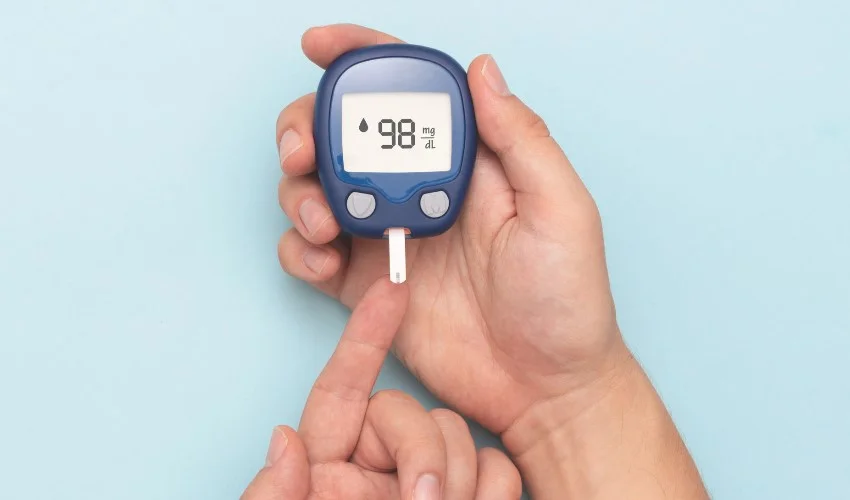Definition of HbA1c test
The HbA1c test, also known as the glycated hemoglobin test, is a blood test that measures the average blood sugar levels over a period of two to three months. It provides important information about a person’s long-term blood sugar control and is commonly used to diagnose and monitor diabetes. The test measures the percentage of hemoglobin that is glycated, or bound to glucose molecules. A higher HbA1c level indicates poorer blood sugar control and may be a sign of uncontrolled diabetes. This test is widely used in clinical practice to assess the effectiveness of diabetes management and to adjust treatment plans accordingly.
Purpose of HbA1c test
The purpose of the HbA1c test is to measure the average blood sugar levels over a period of time. It is primarily used to diagnose and monitor diabetes. By measuring the amount of glycated hemoglobin in the blood, the test provides an indication of how well a person’s diabetes is being managed. It is also used to assess the risk of developing diabetes in individuals with pre-diabetes. The HbA1c test is an important tool in managing diabetes and making treatment decisions.
How HbA1c test works
The HbA1c test, also known as the glycated hemoglobin test, is a blood test that measures the average blood sugar levels over the past two to three months. It provides valuable information about a person’s long-term blood sugar control and is commonly used to diagnose and monitor diabetes. The test works by measuring the amount of glycated hemoglobin, which is formed when glucose in the blood attaches to hemoglobin, the protein in red blood cells that carries oxygen. The higher the blood sugar levels, the more glycated hemoglobin is formed. By measuring the percentage of glycated hemoglobin in the blood, the HbA1c test can provide an indication of a person’s average blood sugar levels over time.
Importance of HbA1c Test
Monitoring blood sugar levels
Monitoring blood sugar levels is an essential part of managing diabetes. The HbA1c test, also known as the glycated hemoglobin test, is a crucial tool in monitoring blood sugar levels over time. It measures the average blood sugar levels over the past two to three months, providing valuable information about a person’s overall diabetes control. By regularly monitoring HbA1c levels, individuals with diabetes can assess the effectiveness of their treatment plan and make necessary adjustments to maintain optimal blood sugar control. This test is typically performed by a healthcare professional and is an important component of diabetes management and prevention of complications.
Diagnosis and management of diabetes
The diagnosis and management of diabetes are crucial for maintaining good health. One important tool in the diagnosis of diabetes is the HbA1c test. This test measures the average blood sugar levels over the past 2-3 months and provides valuable information about a person’s long-term blood sugar control. It is commonly used to diagnose and monitor diabetes, as well as to assess the effectiveness of treatment plans. The HbA1c test is a simple blood test that does not require fasting and can be done at any time of the day. It is an important tool in the overall management of diabetes, helping healthcare professionals make informed decisions about treatment strategies and lifestyle modifications.
Assessing long-term blood sugar control
The hba1c test, also known as the glycated hemoglobin test, is a blood test that measures the average blood sugar levels over the past three months. It is used to assess long-term blood sugar control in individuals with diabetes. The test measures the percentage of hemoglobin that is glycated, or bound to glucose. A higher hba1c level indicates poor blood sugar control and an increased risk of complications related to diabetes. This test is important in managing diabetes and making necessary adjustments to treatment plans to achieve optimal blood sugar control.
Procedure of HbA1c Test
Blood sample collection
Blood sample collection is a crucial step in the HbA1c test, which is used to measure a person’s average blood sugar levels over the past two to three months. During this procedure, a healthcare professional will collect a small sample of blood from a vein in the arm using a needle. The blood sample is then sent to a laboratory for analysis. It is important to follow any instructions given by the healthcare professional to ensure accurate results. The collection process is relatively quick and generally causes minimal discomfort.
Laboratory analysis
Laboratory analysis plays a crucial role in understanding the hba1c test. It involves the measurement of glycated hemoglobin (HbA1c) levels in the blood, which provides valuable information about a person’s average blood sugar levels over the past two to three months. This test is commonly used to diagnose and monitor diabetes, as it helps healthcare professionals assess the effectiveness of treatment plans and make necessary adjustments. The laboratory analysis of hba1c test results is performed using specialized equipment and techniques, ensuring accurate and reliable measurements. These results play a key role in guiding healthcare decisions and improving the management of diabetes.
Interpreting the results
Interpreting the results of an HbA1c test is crucial in understanding a person’s blood sugar control over the past few months. The HbA1c test measures the average blood glucose levels by assessing the amount of glycated hemoglobin in the blood. A higher HbA1c level indicates poorer blood sugar control and may suggest the need for adjustments in diabetes management. On the other hand, a lower HbA1c level indicates better blood sugar control and is generally associated with a reduced risk of diabetes complications. It is important to consult with a healthcare professional to properly interpret the results and make any necessary changes to the treatment plan.
Interpreting HbA1c Results
Normal range
The normal range for HbA1c test, also known as glycated hemoglobin test, is typically between 4% and 5.6%. This test measures the average blood sugar levels over the past two to three months and is commonly used to diagnose and monitor diabetes. A result within the normal range indicates good blood sugar control and a lower risk of developing complications associated with diabetes. However, it is important to note that the target range may vary depending on individual circumstances and medical advice should be sought for personalized target levels.
Prediabetes range
The prediabetes range refers to blood glucose levels that are higher than normal but not yet high enough to be diagnosed as diabetes. It is an important indicator of an increased risk for developing type 2 diabetes. People with prediabetes have a higher chance of developing heart disease and stroke. It is crucial to identify and manage prediabetes early to prevent the progression to diabetes. Lifestyle changes such as adopting a healthy diet, increasing physical activity, and maintaining a healthy weight can help in preventing or delaying the onset of diabetes in individuals with prediabetes.
Diabetes range
The diabetes range refers to the levels of blood glucose that are considered normal for individuals with diabetes. It is important for individuals with diabetes to monitor their blood glucose levels regularly to ensure they are within the target range. The target range for blood glucose levels may vary depending on factors such as age, overall health, and the type of diabetes. Maintaining blood glucose levels within the target range can help prevent complications and manage the symptoms of diabetes effectively. Regular monitoring, along with a healthy diet, exercise, and medication, can help individuals with diabetes maintain their blood glucose levels within the recommended range.
Factors Affecting HbA1c Levels
Blood glucose levels
Blood glucose levels are a key indicator of a person’s overall health and can provide valuable insights into their diabetes management. The HbA1c test, also known as the glycated hemoglobin test, is a blood test that measures the average blood sugar levels over the past two to three months. It is an important tool in monitoring and managing diabetes, as it helps healthcare professionals assess how well an individual’s blood sugar levels have been controlled over time. By regularly monitoring and maintaining healthy blood glucose levels, individuals can reduce the risk of complications associated with diabetes and improve their overall well-being.
Red blood cell lifespan
The red blood cell lifespan refers to the length of time that red blood cells circulate in the bloodstream before they are removed and replaced. In a healthy individual, the average lifespan of a red blood cell is about 120 days. However, various factors can affect this lifespan, such as certain medical conditions or lifestyle choices. Understanding the red blood cell lifespan is important in the context of the HbA1c test, as it helps in interpreting the results and assessing an individual’s overall blood sugar control over a period of time.
Other medical conditions
The HbA1c test, also known as the glycated hemoglobin test, is a blood test that measures the average blood sugar level over the past 2-3 months. It is primarily used to diagnose and monitor diabetes. However, the HbA1c test can also provide valuable information about other medical conditions. High HbA1c levels may indicate a higher risk of developing cardiovascular diseases, such as heart disease and stroke. Additionally, it can be an indicator of certain hormonal disorders, kidney problems, and even certain types of cancer. Therefore, the HbA1c test is not only important for managing diabetes but also for identifying and monitoring other underlying health conditions.
Importance of regular HbA1c testing
Regular HbA1c testing is of utmost importance for individuals with diabetes. It is a vital tool for monitoring blood sugar levels over a period of time, typically three months. By measuring the percentage of glycated hemoglobin in the blood, HbA1c testing provides valuable insights into how well diabetes is being managed. It helps healthcare professionals assess the effectiveness of treatment plans and make necessary adjustments. Additionally, regular HbA1c testing empowers individuals with diabetes to take control of their health and make informed decisions about their lifestyle and medication. It serves as a crucial indicator of long-term blood sugar control and can help prevent complications associated with diabetes. Therefore, it is essential for individuals with diabetes to prioritize regular HbA1c testing as part of their overall diabetes management plan.
Role in diabetes management
The hba1c test plays a crucial role in diabetes management. It is a blood test that measures the average blood sugar levels over the past two to three months. By providing an indication of long-term blood sugar control, the hba1c test helps healthcare professionals assess the effectiveness of diabetes treatment plans and make necessary adjustments. It is an important tool in monitoring and managing diabetes, as it allows individuals with diabetes to track their progress and make informed decisions about their health. Regular hba1c testing is recommended for people with diabetes to ensure their blood sugar levels are well-controlled and to prevent complications associated with high or low blood sugar.
Future developments in HbA1c testing
Future developments in HbA1c testing are focused on improving the accuracy and efficiency of the test. Researchers are exploring new methods and technologies that can provide more precise measurements of HbA1c levels. This includes the development of point-of-care testing devices that can deliver instant results, eliminating the need for laboratory processing. Additionally, efforts are being made to standardize HbA1c testing across different laboratories to ensure consistent and reliable results. These advancements in HbA1c testing will not only benefit individuals with diabetes but also healthcare providers in monitoring and managing the condition effectively.




